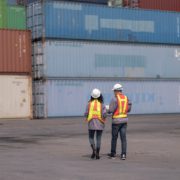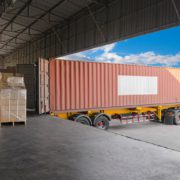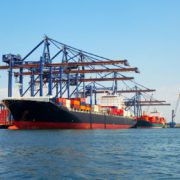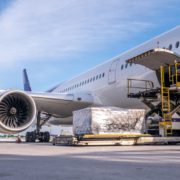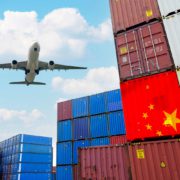In this turbulent trade environment, Euro-American Worldwide Logistics serves as a critical partner for businesses facing the 25% tariffs. With decades of experience in customs brokerage, cross-border freight forwarding, and international trade compliance, Euro-American provides end-to-end support to keep shipments moving and help clients adapt strategically. Our team has been at the forefront of responding to trade policy shifts, and our solutions are tailored to mitigate the impact of tariffs while maintaining full regulatory compliance (es.linkedin.com). Below are key ways Euro-American’s specialists assist clients in navigating the U.S.-Canada tariff challenges:
- Proactive Customs Brokerage & Compliance Support: Euro-American’s licensed customs brokers are experts in Canadian and U.S. import regulations. They ensure your shipments are properly classified and documented to meet CBSA requirements and minimize duties. Our team will review your product catalog and identify which items are subject to the 25% surtax, verifying HS codes against the tariff list. We help clients re-classify goods when appropriate – for example, finding an alternate valid classification if a product has multiple uses, potentially placing it outside the tariff-applicable category. All declarations are double-checked for accuracy so that you don’t overpay or underpay tariffs. Euro-American also assists in preparing Certificates of Origin and origin documentation (millerthomson.com) for each shipment, ensuring that if any goods are not of U.S. origin, CBSA is duly notified (saving you from an unnecessary surtax). By staying ahead on compliance – including obtaining binding rulings where needed and leveraging any Chapter 98/99 provisions – we help avoid costly delays or penalties at the border. Our compliance specialists continuously monitor CBSA memoranda and Customs Notices (like Customs Notice 25-10 outlining the surtax procedures) to keep your documentation aligned with the latest rules. The result is a smoother customs clearance process even under the new tariff regime.
- Efficient Cross-Border Freight Forwarding: As a 3PL provider deeply familiar with cross-border logistics, Euro-American coordinates shipments to prevent unnecessary holdups and optimize routes. Since the tariffs began, we’ve observed patterns in border congestion and have adjusted routing plans accordingly. For instance, if the Ambassador Bridge or Peace Bridge is experiencing long queues due to intensive inspections, we can reroute a client’s truck to a less congested crossing or arrange for off-peak crossing times. We also work with carriers to pre-file customs entries and surtax declarations electronically, so that by the time the truck arrives at the border, much of the processing is already done – reducing wait times. Euro-American provides clients with real-time updates on border conditions and clearance status, avoiding the uncertainty that many shippers faced on their own (truckingdive.com). We recognize that communication is key: our operations team frequently sends updates to customers about changes in procedures and any slowdowns at customs (truckingdive.com). By keeping everyone informed, we enable shippers to make timely decisions (like holding a shipment if needed or expediting another). Our end-to-end handling – from pick-up at the U.S. facility, through customs, to delivery in Canada – means accountability at every step, freeing clients from juggling multiple service providers in a fraught trade lane. Simply put, we navigate the practical challenges of cross-border transport so our clients can focus on their core business, not the border.
- Bonded Warehousing & Duty Management Solutions: Euro-American offers bonded warehousing facilities and customs-bonded logistics solutions that are particularly valuable under the current tariffs. Our bonded warehouses in Canada allow importers to store U.S. goods without immediately paying the 25% surtax, deferring duty payments until goods are sold domestically. This service is a cash-flow lifesaver for clients who import large volumes – instead of paying a lump sum to CBSA upon arrival, they can stagger the duty outlay as they gradually withdraw inventory for use or sale (ghy.com). If there’s a chance tariffs may be short-lived or if the goods might be re-exported, bonded storage completely avoids locking in a cost that might later be refunded. We manage all the required customs reporting for the bonded goods and ensure strict inventory control, so when our client is ready to take some product out of bond, the proper duties are assessed just on that portion. Additionally, Euro-American assists with duty drawback claims and re-export coordination. For example, one of our clients imports U.S. components, uses them in manufacturing in Canada, and exports the finished product overseas. We’ve set up a system to track the U.S. components through production and file for duty drawbacks, recovering the surtax paid on the imported inputs. This kind of detailed trade compliance management is complex, but it’s part of our comprehensive service to reduce net tariff costs for our clients. Through bonded warehousing and diligent duty recovery processes, Euro-American helps companies avoid paying more tariffs than necessary and improve their cost management during the trade war.
- Supply Chain Strategy and Rerouting Consultation: Euro-American’s role goes beyond day-to-day shipping; we act as a strategic advisor in global logistics. In the face of these U.S.-Canada tariffs, our trade compliance consultants work with clients to adapt their supply chains for cost efficiency. We conduct analyses to identify alternative sourcing options – for instance, evaluating if sourcing certain raw materials from Europe or Asia would be beneficial when factoring in the 25% tariff on the U.S. source. Thanks to our worldwide network, we can even help arrange trial shipments from new suppliers in other countries to diversify the supply chain. If a client decides to shift production or sourcing to their Canadian operations or to Mexico (to leverage USMCA internal trade), we coordinate the logistics of moving machinery or setting up new cross-border routes. In some cases, re-routing freight through different trade lanes can also help. For example, a U.S. company with a Canadian customer base might route shipments through a U.S. bonded warehouse and then directly to overseas markets or to Canada via a third country when feasible, to change the origin of the goods. (Any such approach is carefully vetted to ensure it complies with origin rules – we don’t engage in illegal transshipment – but there are legal ways, such as substantial transformation in a third country, to alter origin.) Euro-American’s depth of knowledge in global trade agreements and tariff engineering allows us to advise on these complex scenarios. Our goal is to find creative solutions so that clients can maintain supply chain continuity and manage costs, even if it means reconfiguring distribution channels temporarily. By partnering with us, companies tap into a wealth of logistics and regulatory expertise that turns a daunting tariff challenge into a manageable logistics puzzle.
- Ongoing Regulatory Compliance & Monitoring: One of Euro-American’s core strengths is keeping clients compliant amid changing rules. Our customs brokerage team stays up-to-date on all CBSA policy updates, amendments to the surtax order, and any U.S. policy shifts that could affect Canadian countermeasures. We actively monitor announcements from both governments. As the situation evolves – for instance, if Canada amends the product list or if any temporary pauses or exemptions occur – we immediately inform our clients and adjust our processes (truckingdive.com). This was evident when the U.S. announced a pause for USMCA-qualified goods; we helped our clients ensure their USMCA certificates were in place to benefit (truckingdive.com). On the Canadian side, should there be a change (say the second phase of tariffs coming into effect or a remission granted for certain HS codes), we will update classifications and advise clients on the new compliance steps. Euro-American also provides training and consultations to client teams. We can host briefings for your procurement, finance, or logistics staff on how the tariffs work and what internal processes you should adjust (for example, instructing your U.S. vendors on documentation, or adjusting your landed cost calculations in your ERP system). By acting as an extension of your compliance department, Euro-American ensures you stay ahead of regulatory changes rather than reacting after problems occur. Our motto is that no client shipment should be delayed or penalized for regulatory reasons – not on our watch.
In delivering these services, Euro-American Worldwide Logistics combines industry thought leadership with hands-on problem solving. We understand that every client’s situation is unique – the challenges of a steel importer differ from those of a consumer goods retailer. Our specialists take the time to craft customized plans, whether it’s setting up a duty-deferral program, finding a new carrier route, or filing complex customs entries correctly the first time. Through our bonded facilities, brokerage acumen, and integrated logistics network, we aim to turn a compliance challenge into a competitive advantage – helping clients maintain uninterrupted supply chains and customer service, even as competitors struggle with delays or fines. As one logistics industry report noted, “partnering with experienced logistics providers like Euro-American Worldwide Logistics can help businesses navigate these challenges, mitigate risks, and ensure seamless cross-border operations” (es.linkedin.com). We take pride in living up to that role, especially in these turbulent times.
Conclusion
The imposition of Canada’s 25% tariffs on U.S. goods has undeniably complicated the landscape of cross-border logistics and international trade compliance. What used to be routine U.S.-to-Canada shipments now require careful cost calculations, rigorous customs planning, and often creative supply chain adjustments. Cross-border trade has felt the strain through slower movements and higher expenses; integrated supply chains have had to absorb cost shocks on key materials like steel and aluminum; and manufacturers face tough choices in pricing and sourcing. Both U.S. exporters and Canadian importers are navigating an environment of uncertainty, balancing short-term operational fixes with long-term strategic shifts such as supplier diversification or nearshoring.
In confronting these challenges, knowledge and preparation are the best tools. Businesses must educate themselves on the new regulations – understanding tariff classifications, CBSA procedures, and options like bonded warehousing – to avoid missteps. By following best practices in customs clearance (accurate documentation, origin proof, use of duty deferral programs), companies can prevent unnecessary delays and costs. It’s also essential to maintain agility: continuously evaluate your supply chain for vulnerabilities and be ready to pivot if tariffs expand or if opportunities arise (for example, a tariff exemption or an alternate supplier opening up).
Throughout this white paper, we emphasized that professional guidance can make a decisive difference. Euro-American Worldwide Logistics stands ready as a partner in this process. With our expertise in customs brokerage and freight forwarding, we help ensure shipments are cleared efficiently and in full compliance – no small feat when regulations are in flux. Our proficiency in global trade compliance means we can identify opportunities to mitigate tariffs, whether through reclassification, duty recovery, or routing adjustments, all while keeping clients on the right side of the law. And with assets like bonded warehouses and a skilled workforce, we provide practical means to defer or reduce the financial impact of tariffs on your operations.
In essence, the goal for any business impacted by the U.S.-Canada tariffs is to remain resilient and competitive despite the added friction. By leveraging the right strategies and partners, companies can do more than just cope – they can continue to thrive. Euro-American’s customs specialists and logistics professionals have already been supporting clients in this regard, enabling them to avoid unnecessary delays, manage costs, and maintain supply chain continuity. We’ve helped clients re-route critical shipments to meet deadlines, advised on tariff code appeals that saved millions in duties, and implemented warehouse solutions that kept production lines running. This blend of strategic insight and tactical execution exemplifies how we blend thought leadership with practical action.
As the trade situation evolves, Euro-American will remain vigilant and adaptable – just as we urge our clients to be. We are committed to guiding businesses through the complexities of U.S.-Canada tariffs, import/export regulations, and international trade compliance. Whether you need a comprehensive cross-border logistics plan or targeted advice on a specific customs issue, our team is here to help you navigate the path forward. In turbulent trade waters, having an experienced logistics partner is invaluable – and Euro-American Worldwide Logistics is proud to be that dependable partner for companies across industries. Together, we can mitigate the challenges of today’s tariffs and position your supply chain for success, no matter what changes tomorrow may bring. Contact us today!
References
Canada Border Services Agency (2025). Customs Notice 25-10: United States Surtax Order (2025-1).
cbsa-asfc.gc.ca
Department of Finance Canada (2025). News Release: Canada announces robust tariff package in response to unjustified U.S. tariffs.
canada.ca
Department of Finance Canada (2025). Backgrounder: List of products from the United States subject to 25% tariffs effective March 4, 2025.
canada.ca
CBS News (2025). U.S. tariffs on Mexico and Canada go into effect.
cbsnews.com
Trucking Dive (2025). Tariffs create frenzy in cross-border trucking.
truckingdive.com
Export Development Canada – Trade Insights (2025). How Canadian tariffs on U.S. goods may affect your business in 2025.
edc.ca
Miller Thomson (2025). U.S. tariffs and Canadian retaliatory measures.
millerthomson.com
Euro-American Worldwide Logistics (2025). New U.S. Steel and Aluminum Tariffs Shake Global Trade: What Businesses Need to Know.
eawlogistics.com
LinkedIn – Euro-American Worldwide Logistics (2025). Trade War Special Report.
es.linkedin.com
CBSA Memoranda D and CBSA web pages on Duty Deferral Program and Customs Bonded Warehouses.
ghy.com

